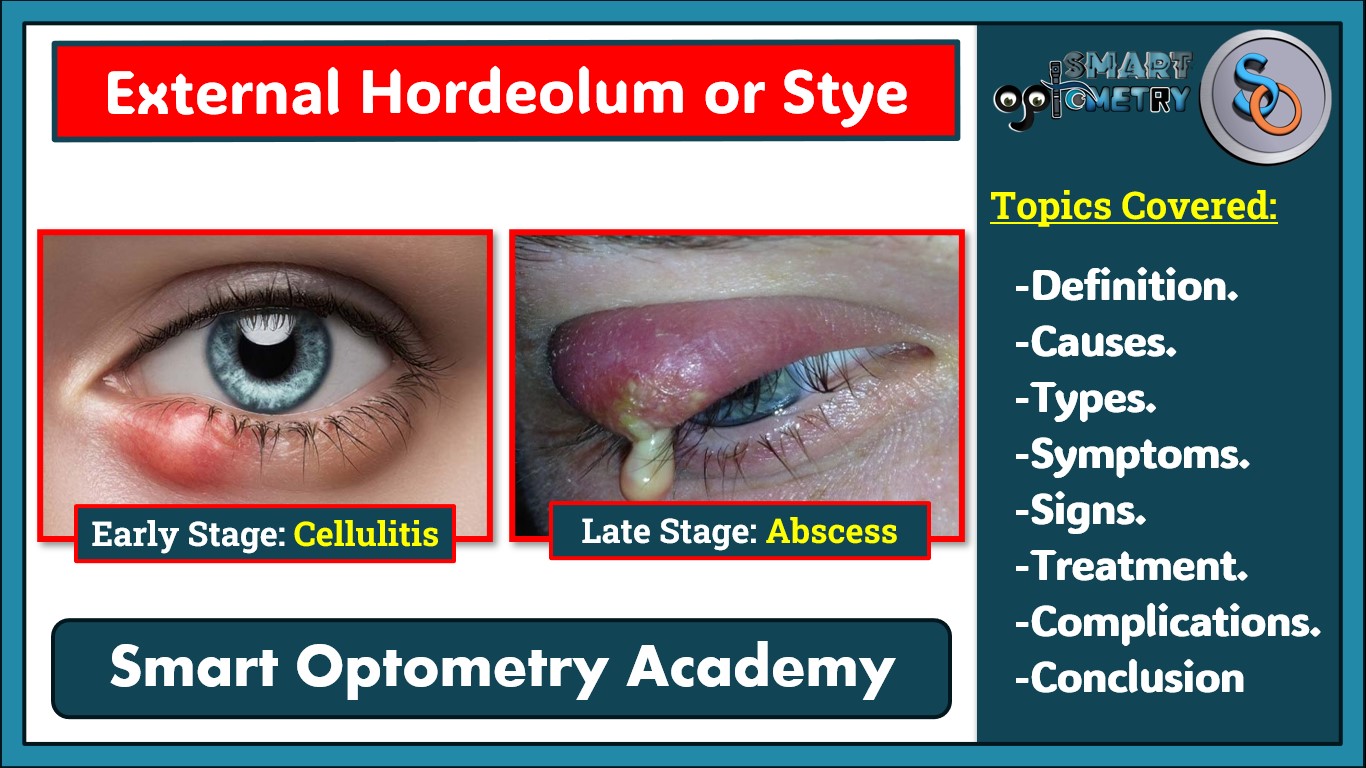What is External Hordeolum or Stye?

Stye is an acute Suppurative Bacterial Inflammation of gland of the Zeis or Moll caused by Staphylococcus Aureus.
- From the definition 3 things need to be Remembered:
- It’s a “Suppurative Inflammation”:
- Suppurative inflammation is a type of inflammation that involves the production of pus.
- It’s Associated with “Gland of the Zeis or Moll”:
- Gland of the Zeis or Moll is located at the tip of the Lid. So, location of Stye will be always at the Lid Margin.
- It’s caused by “Staphylococcus Aureus”:
- Staphylococcus aureus is a gram-positive spherically shaped bacteria that cause skin and soft tissue infections such as abscesses and cellulitis.
So Remember, In Stye a abscess will form that will lead to Pus formation when infected and will always be located in the Lid Margin.
What is the Etiology of External Hordeolum or Stye?
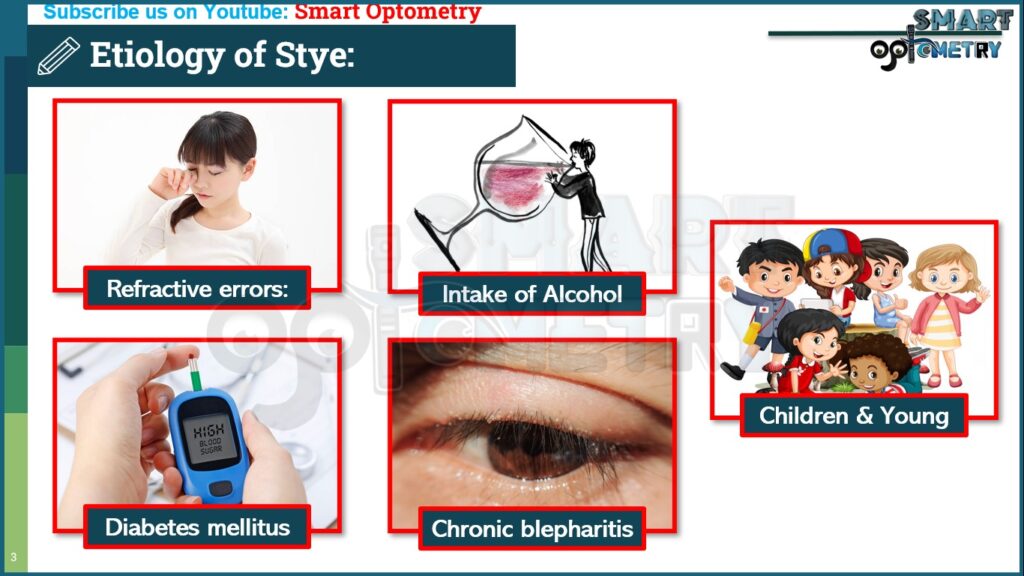
1. Children & young adults:
Higher oil production and more active sebaceous glands in younger individuals create an environment conducive to bacterial growth, increasing stye risk.
2. Refractive errors:
Uncorrected refractive errors cause frequent eye rubbing, spread bacteria to the eyelid margins and blocking glands, leading to infection.
3. Chronic blepharitis:
Blepharitis can cause blockage of the oil glands, which can lead to bacterial infection and stye development.
4. Diabetes mellitus:
Uncontrolled Diabetes Mellitus impair immune function, making the eyelid glands more susceptible to infections like styes.
5. Intake of excess Alcohol:
Alcohol compromised immune responses, making the eyelids more susceptible to infections, like: Stye.
.
.
What are the Clinical Features of External Hordeolum or Stye?
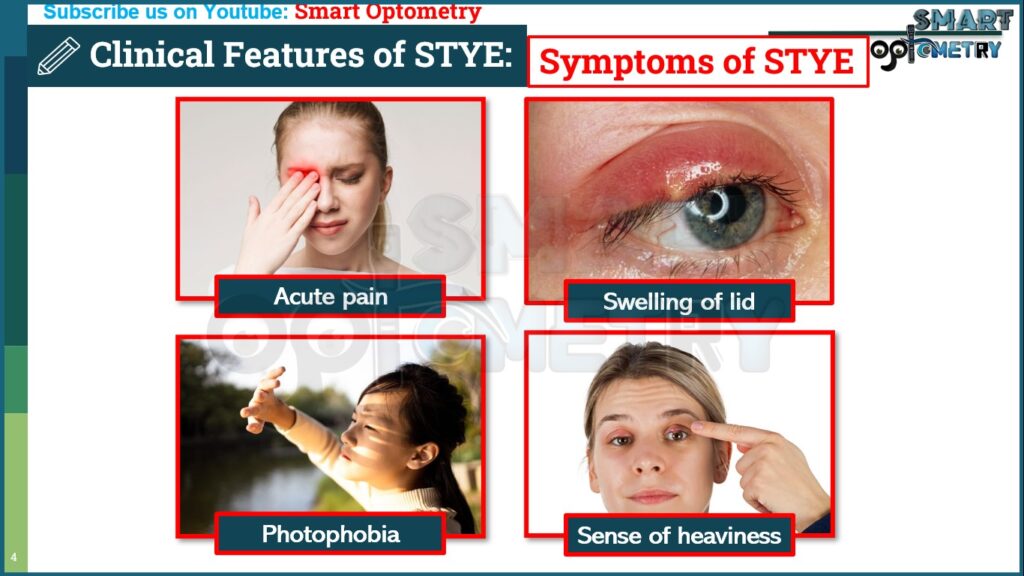
Symptoms of Stye:
1. Acute pain:
The infected gland swells, pressing on surrounding tissue and triggering pain due to local inflammation.
2. Swelling of lid:
Inflammation from the infection causes fluid accumulation, leading to visible swelling of the eyelid.
3. Mild watering:
Irritation of the eye’s surface due to the stye stimulates tear production as a protective response.
4. Photophobia:
Inflammation leads to the swollen eyelid and nearby tissues that irritate ocular nerves ultimately leading to increases sensitivity to light.
5. Sense of heaviness:
Swelling and increased tissue weight due to Inflammation create a sensation of heaviness in the affected lid.
.
.
Signs of External Hordeolum or Stye:

The signs of Stye can be divided into 2 stages:
1: Early Stage- Stage of cellulitis:
It is characterized by localized, hard, red, tender swelling at the lid margin associated with marked oedema.
2. Late Stage- Stage of abscess formation:
In this stage Suppurative inflammation occurs and a visible pus point on the lid margin appears.
Remember: Usually there is one stye, but occasionally, these may be multiple.
Early Stage or Stage of cellulitis leads to Following Signs:

1. Pain & Redness:
Inflammation from bacterial infection leads to vasodilation, causing redness and activating pain receptors.
2. Oedema of the affected lid:
Inflammatory mediators increase vascular permeability, allowing fluid to leak into surrounding tissues, resulting in oedema.
3. Local temperature is raised:
Inflammation stimulates blood flow to the area, raising local skin temperature.
.
.
Late Stage or Stage of Abscess leads to Following Signs:
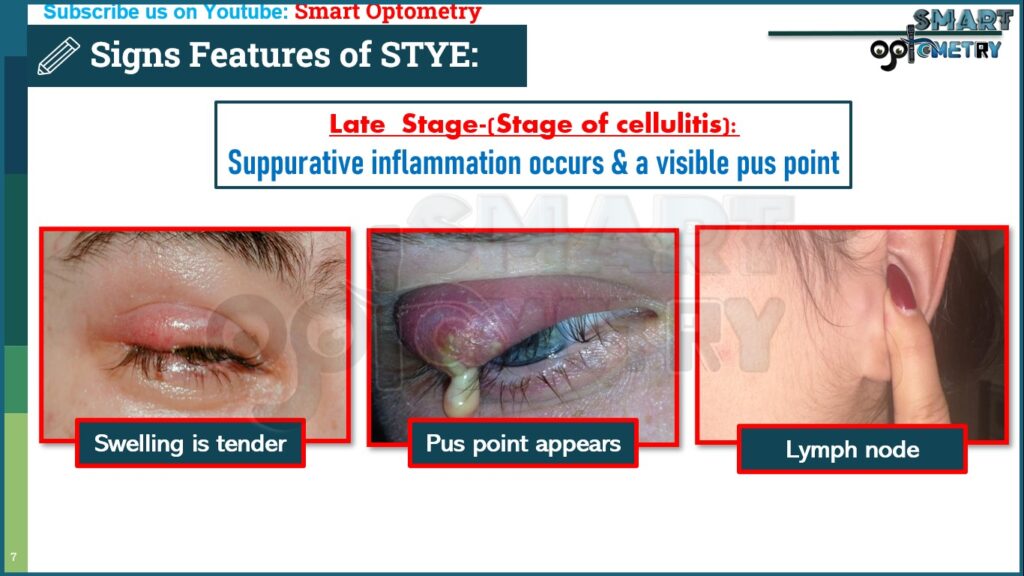
1. The swelling is tender:
The increased pressure from fluid accumulation and inflammatory response sensitizes local nerve endings, making the area tender.
2. Pus point appears:
As immune cells accumulate to fight the infection, they form a collection of pus that pushes toward the surface.
3. Matting of eyelashes:
Discharge from the infection dries on the eyelashes, causing them to stick together.
4. Enlargement of the pre-auricular lymph node:
The nearby lymph nodes react to the infection by swelling as they filter and respond to pathogens.
.
.
What is the Management or Treatment of External Hordeolum or Stye?
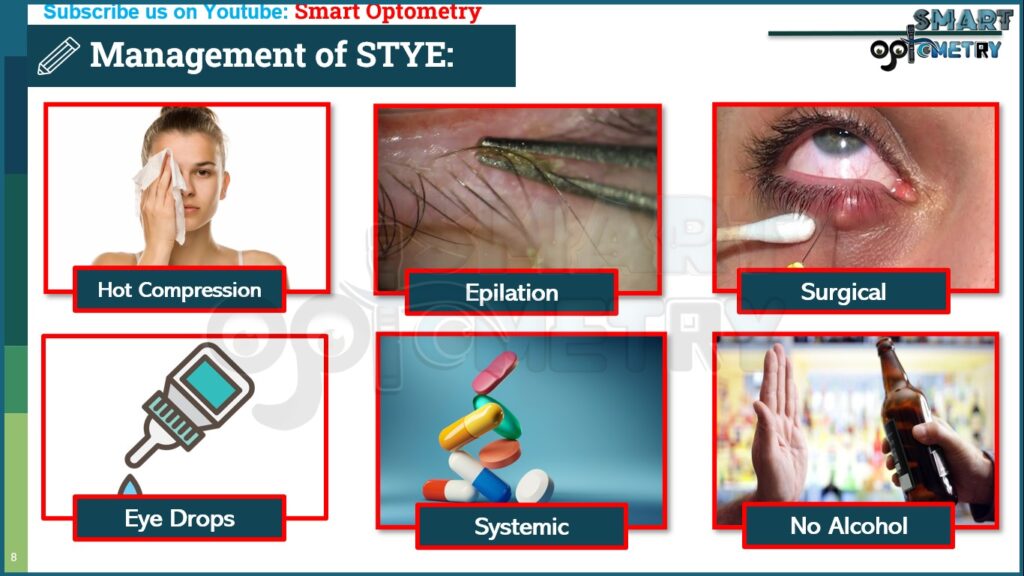
1. Hot compresses:
Applying heat increases blood flow to the affected area, promoting drainage of the infected gland and reducing pain and swelling during the cellulitis stage.
2. Epilation of affected cilia:
Removing the affected eyelash allows trapped pus to drain from the infected gland, relieving pressure and promoting faster healing.
3. Surgical incision:
For a large abscess, a small incision allows for the evacuation of pus, directly reducing infection and inflammation when other methods are insufficient.
4. Antibiotic eyedrops:
Regular application of antibiotic (Ciprofloxacin or Moxifloxacin) drops 3-4 times daily helps control bacterial growth on the eyelid surface, preventing further infection of nearby glands.
5. Eye ointment:
Applying antibiotic ointment (Ciprofloxacin or Moxifloxacin) at bedtime ensures prolonged exposure to antibiotics, helping control infection during healing.
6. Anti-inflammatory and analgesics:
These medications relieve pain and reduce inflammation and swelling, improving comfort during healing.
7. Systemic antibiotics:
In severe or persistent cases, systemic antibiotics (Ciprofloxacin or Cefixime) target the infection throughout the body, providing early control and preventing complications.
8. Treatment of predisposing conditions:
Addressing underlying causes like uncorrected refractive error, diabetes, alcohol use, and chronic blepharitis prevents recurrence by reducing factors that contribute to stye formation.
.
.
What are the Complications of External Hordeolum or STYE:

1. Ulcerative blepharitis:
Infection from a stye can spread along the eyelid margin, leading to inflammation and ulceration of eyelash follicles and surrounding skin, resulting in ulcerative blepharitis.
2. Cellulitis and lid abscess:
When the infection spreads to adjacent tissues, it can cause diffuse inflammation (cellulitis) or localize into a pus-filled abscess within the eyelid, resulting in severe swelling and pain.
3. Orbital cellulitis (rare):
If the infection penetrates deeper structures, it can spread beyond the orbital septum into the orbital space, leading to orbital cellulitis, which causes painful swelling, redness, and potentially impaired eye movement.
4. Cavernous sinus thrombosis (very rare):
In extreme cases, infection may spread via facial veins to the cavernous sinus in the brain, leading to a life-threatening clot that can cause severe headache, vision issues, and even neurological deficits.
.
.
- Check Our Courses: Ophthalmic Instrumentation, Clinical Refraction, Contact Lens, Binocular Vision, Dispensing Optics, MCQs in Optometry
- Download our App “Optometry Notes & MCQs” from Google Play Store.

